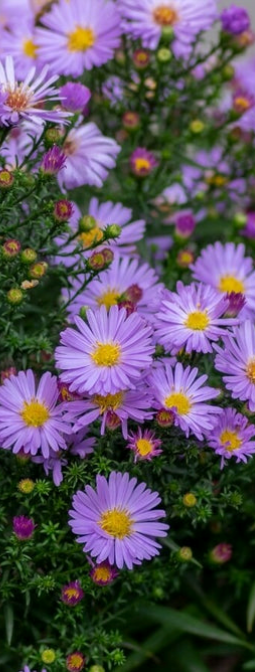- 2024 Native Trees
- >
- Herbaceous Plants
- >
- New York Aster (Symphyotrichum novi-belgii)
New York Aster (Symphyotrichum novi-belgii)
Height: 3 to 5 feet
Bloom Time: August to October
Bloom Description: Purple/lavender rays with gold centers
Sun: Full sun (can tolerate part shade but won’t flower as well)
Attracts: Pollinators, songbirds, small mammals, specialized bees
Aster Family
Native to Jefferson County
If Frank Sinatra was designing your garden he would tell you to start spreadin’ the news that New York Aster is a low maintenance flower that can make it there or anywhere.
As other garden flowers are drawing the curtain on their flowering season, New York aster is just beginning the show. Also known as Michaelmas daisy, this hardy perennial is a late summer bloomer, with clusters of lavender flowers with yellow centers, atop 3 to 5 foot tall plants.
Found naturally in eastern coastal states and inland, New York aster can tolerate a wide range of growing conditions, although it performs best in full sun. It also has a preference for moist, well-drained, sandy, loamy, or clay soils. It can spread by seed or colonize by long rhizomes. A single plant usually needs 2 to 3 feet of space to grow.
In native landscapes, New York aster is an attractive upright perennial to add to a mixed bed or border. It not only adds late-season color to the garden, but is also a valuable late season food source for honeybees and other pollinators. The Xerces Society notes New York aster as having special value to native bees.
After the plant has gone to seed, it is an attractant for songbirds including finches, chickadees, and sparrows. Twelve species of butterflies and moths use the plant as a caterpillar host plant, including the Silvery Checkerspot and Pearl Crescent butterflies. ■



